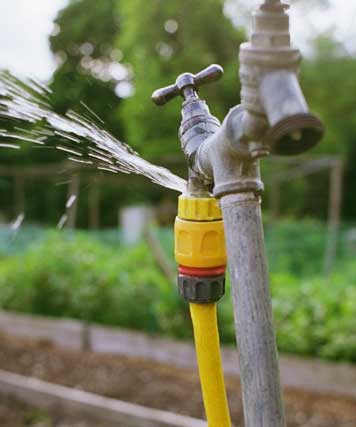Everybody may have their own individual way of thinking involving Hacks to detect leaks.

Early discovery of dripping water lines can mitigate a possible catastrophe. Some tiny water leakages may not be visible.
1. Examine the Water Meter
Every residence has a water meter. Checking it is a surefire manner in which helps you find leakages. For starters, shut off all the water resources. Guarantee no person will flush, make use of the tap, shower, run the washing maker or dish washer. From there, go to the meter as well as watch if it will change. Considering that no person is utilizing it, there should be no motions. That shows a fast-moving leakage if it relocates. If you find no adjustments, wait a hr or 2 as well as inspect back once again. This implies you may have a slow leakage that can also be underground.
2. Inspect Water Consumption
Analyze your water expenses and track your water intake. As the one paying it, you must observe if there are any disparities. If you identify sudden changes, despite your usage being the same, it indicates that you have leaks in your plumbing system. Keep in mind, your water costs must fall under the same variety each month. An unexpected spike in your costs indicates a fast-moving leakage.
A consistent boost every month, even with the very same behaviors, reveals you have a sluggish leak that's likewise slowly escalating. Call a plumber to extensively examine your property, specifically if you really feel a warm area on your flooring with piping beneath.
3. Do a Food Coloring Test
When it comes to water intake, 30% comes from toilets. Test to see if they are running effectively. Decrease specks of food shade in the tank and also wait 10 minutes. If the shade somehow infiltrates your dish during that time without flushing, there's a leak in between the tank and also bowl.
4. Asses Outside Lines
Do not fail to remember to check your exterior water lines as well. Ought to water permeate out of the connection, you have a loosened rubber gasket. One little leak can lose loads of water as well as increase your water expense.
5. Evaluate and Examine the Scenario
Property owners should make it a behavior to examine under the sink counters and also also inside closets for any bad odor or mold growth. These two warnings show a leak so punctual focus is needed. Doing routine inspections, also bi-annually, can conserve you from a major problem.
Inspect for stainings and also damaging as a lot of pipes as well as home appliances have a life expectations. If you suspect leaking water lines in your plumbing system, don't wait for it to rise.
Early detection of leaking water lines can reduce a prospective disaster. Some tiny water leakages may not be noticeable. Checking it is a surefire means that helps you uncover leakages. One tiny leakage can waste loads of water and surge your water bill.
If you think leaking water lines in your plumbing system, do not wait for it to escalate.
WARNING SIGNS OF WATER LEAKAGE BEHIND THE WALL
PERSISTENT MUSTY ODORS
As water slowly drips from a leaky pipe inside the wall, flooring and sheetrock stay damp and develop an odor similar to wet cardboard. It generates a musty smell that can help you find hidden leaks.
MOLD IN UNUSUAL AREAS
Mold usually grows in wet areas like kitchens, baths and laundry rooms. If you spot the stuff on walls or baseboards in other rooms of the house, it’s a good indicator of undetected water leaks.
STAINS THAT GROW
When mold thrives around a leaky pipe, it sometimes takes hold on the inside surface of the affected wall. A growing stain on otherwise clean sheetrock is often your sign of a hidden plumbing problem.
PEELING OR BUBBLING WALLPAPER / PAINT
This clue is easy to miss in rooms that don’t get much use. When you see wallpaper separating along seams or paint bubbling or flaking off the wall, blame sheetrock that stays wet because of an undetected leak.
BUCKLED CEILINGS AND STAINED FLOORS
If ceilings or floors in bathrooms, kitchens or laundry areas develop structural problems, don’t rule out constant damp inside the walls. Wet sheetrock can affect adjacent framing, flooring and ceilings.
https://www.servicemasterbyzaba.com/blog/how-to-detect-water-leakage-in-walls/

We were shown that write-up on Locating water leaks from a friend on a different domain. For those who enjoyed reading our blog post if you please don't forget to share it. Thanks for your time. Come back soon.